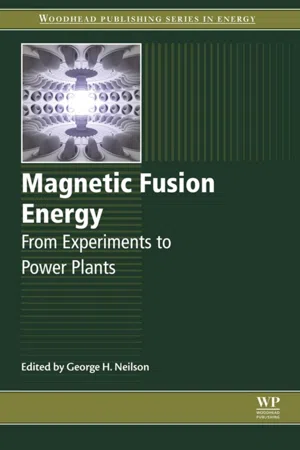The promise of clean and essentially unlimited energy from nuclear fusion has inspired a global research enterprise that has now been under way for more than 65 years. This period, the second half of the 20th century and the first years of the 21st century, has seen rapid advances in science and technology with huge public impact—in aerospace, nuclear power, computers, medicine, and many other fields. Society, for a time, became accustomed to the idea that with enough investment, human genius and creativity could conquer large-scale technological challenges on roughly the timescale of a generation. Commercial fusion energy, in contrast, while not lacking in any of these ingredients, remains a distant goal; its development timescale is sure to pass the century mark, and its rate of penetration into the future global energy economy is highly uncertain. The journey, it turns out, is a long one.
Why such a gloomy introduction to a book about fusion, written by dedicated fusion researchers who are passionately committed to its ultimate success? The reason is to acknowledge, at the outset, an inescapable fact: fusion is difficult. Viewed from that perspective, society's sustained commitment to fusion over so many years is remarkable. The field continues to attract men and women who are motivated to confront the challenges of difficult problems, whether in plasma science, materials science, fusion technology, or engineering, and to have the opportunity to make progress and have an impact on an important enterprise. Fusion receives support from policy makers and funding appropriators in many countries for a host of reasons, but all tied in some way to the realization that the world's need for large-scale clean energy solutions is so great that the fusion's potential must be thoroughly understood, demonstrated, and evaluated. Most importantly, fusion research and development continues to make impressive scientific and technical progress in the face of formidable challenges. That is what this book is about.
Magnetic fusion research crossed a watershed in the first decade of the 21st century with an agreement by the European Union, Japan, China, Russia, India, South Korea, and the United States to build ITER, an experimental project to explore the science and technology of maintaining fusion conditions in a plasma self-heated by its own fusion power, that is, a burning plasma. We can pinpoint a watershed moment on November 21, 2006, the date the ITER agreement was signed in Paris by all seven parties, but in reality the line that was crossed was wide and gray, not sharp and black. The decades leading up to the ITER agreement were marked by research progress across a broad spectrum of fusion topics, much of it achieved through plasma physics experimentation in magnetic fusion machines. As the ITER design came into focus throughout the 1990s, the global fusion community responded by sharpening its research focus on topics that were the most critical for securing the scientific and technical basis for ITER's design. From that perspective, the amassing of a scientific knowledge base sufficient to justify construction of a huge international experiment that will take fusion into the burning plasma regime is an accomplishment that must be viewed as a capstone of the first half-century of fusion research.
Having crossed into what could be called the “ITER Era,” the fusion community has begun to tackle the next set of challenges on the journey to commercial fusion. Most prominent among these challenges, of course, are the construction of the ITER experiment itself and the successful achievement of its burning plasma mission. With the international ITER project team now manufacturing the massive components that will be assembled to form the core tokamak device and developing the supporting infrastructure on the Cadarache, France site, fusion researchers continue to train their experiments toward topics critical to ITER, now prototyping plasma control solutions that will be usable on ITER to optimize its performance and to maint...
